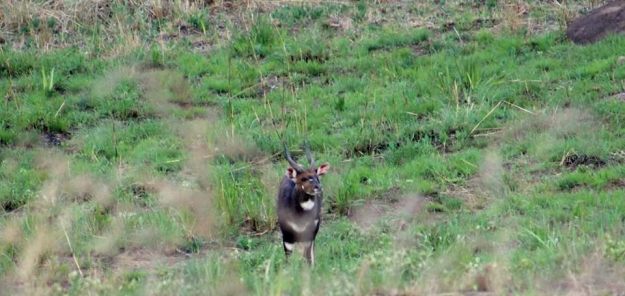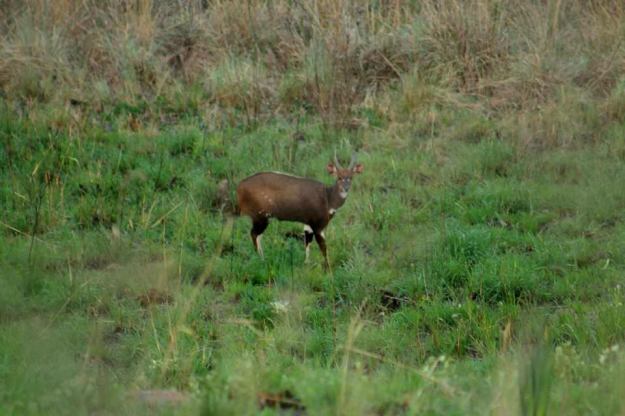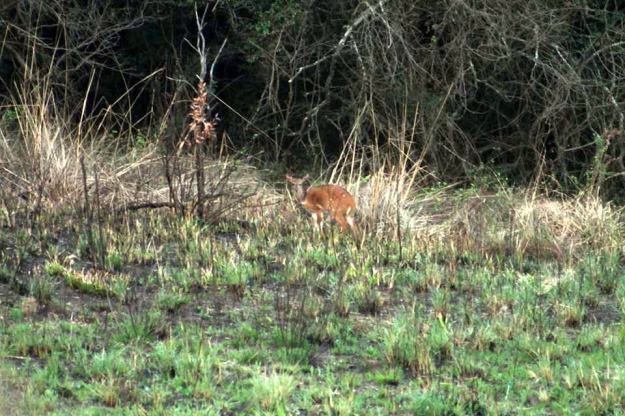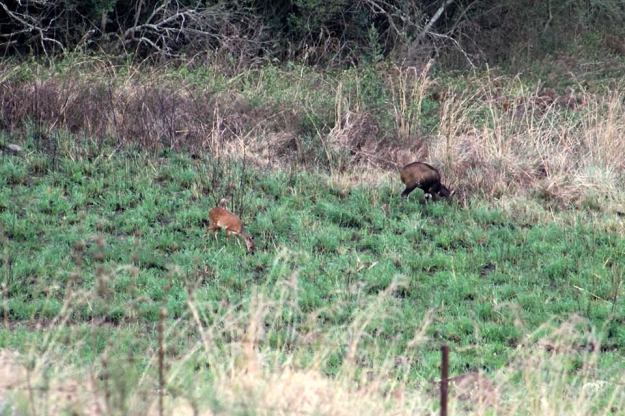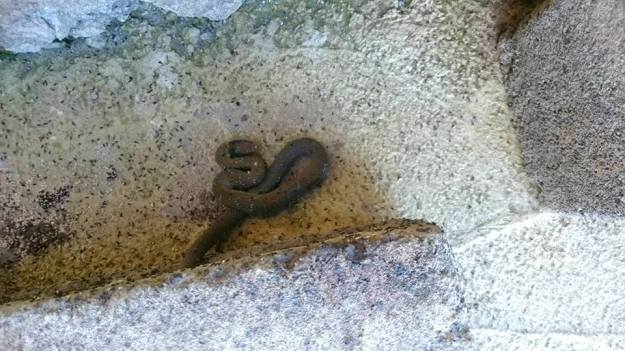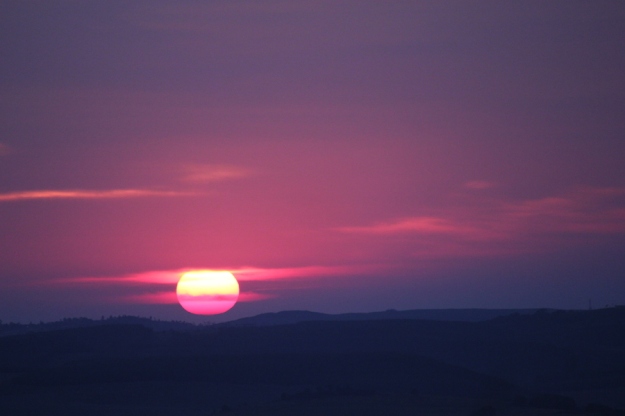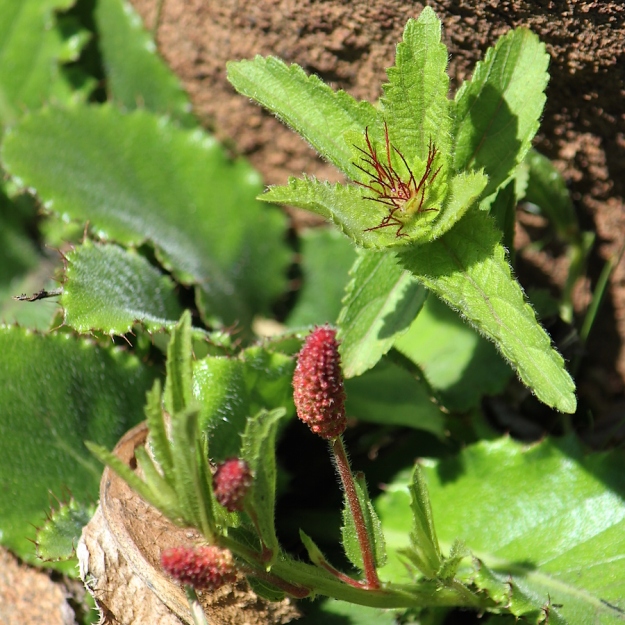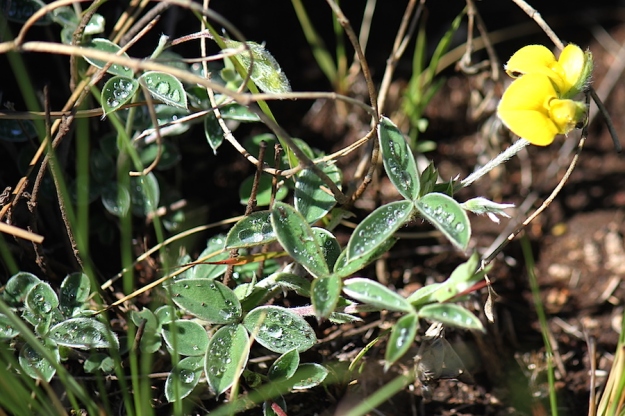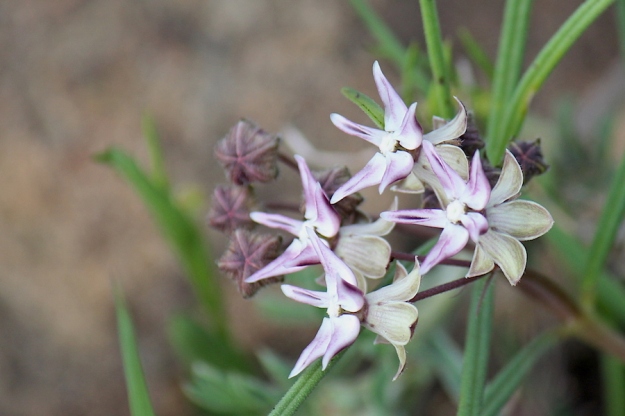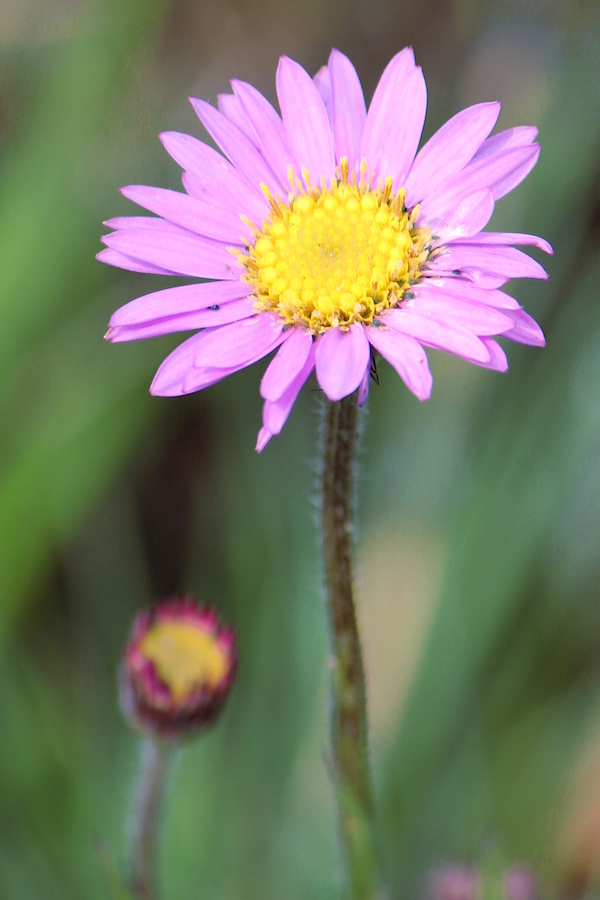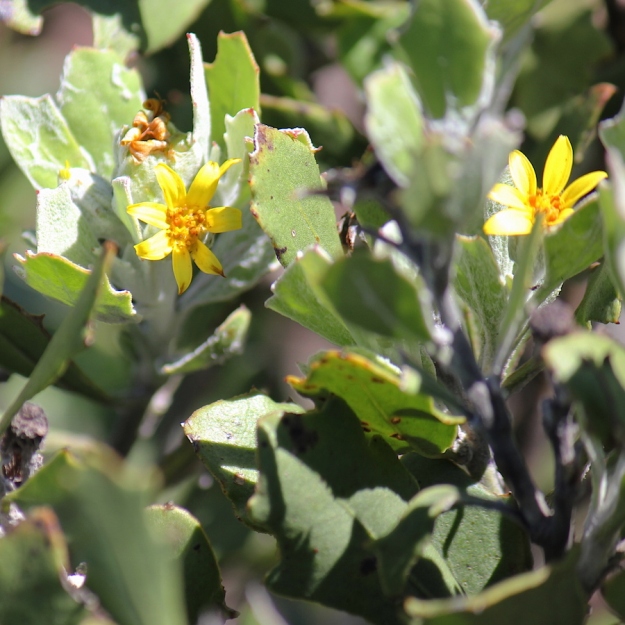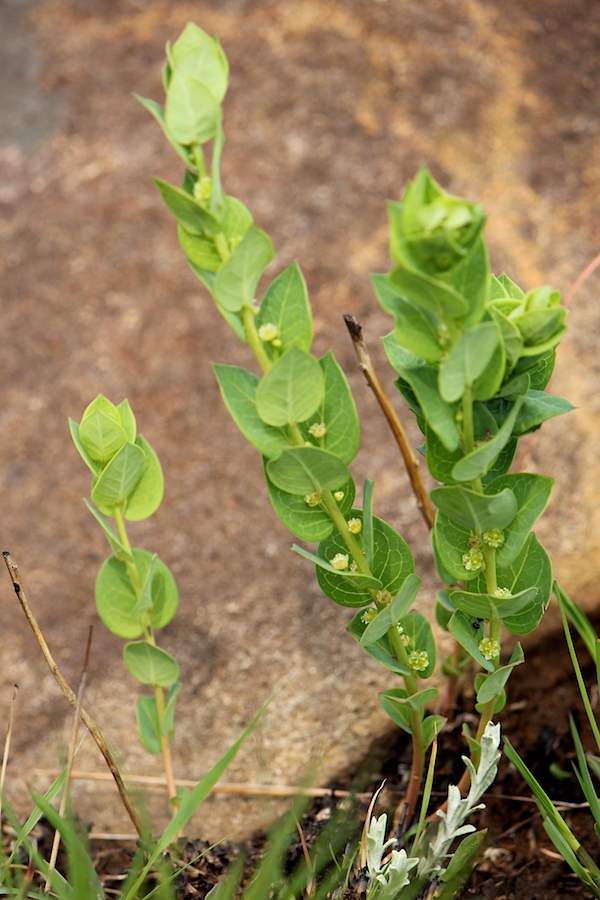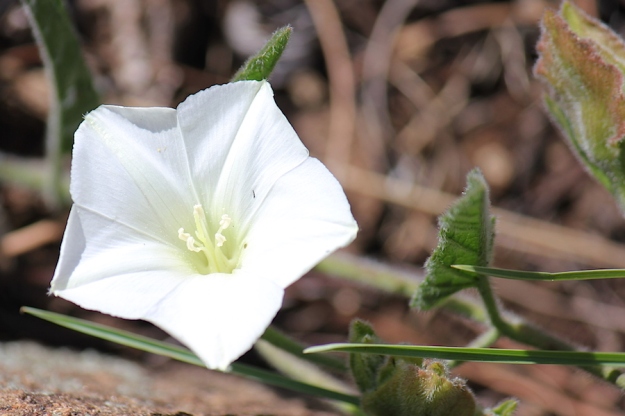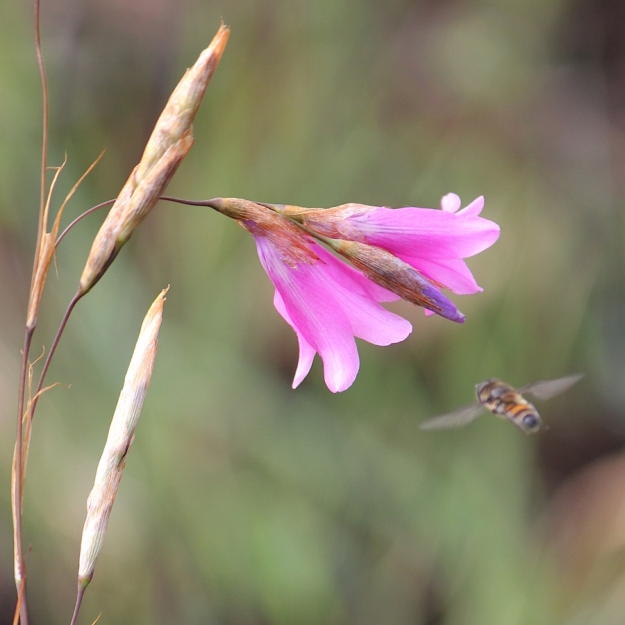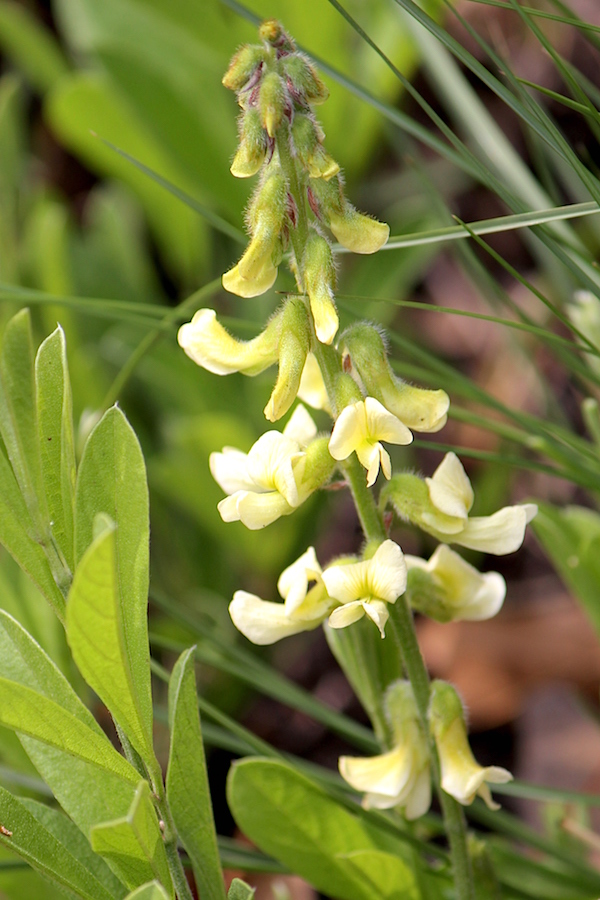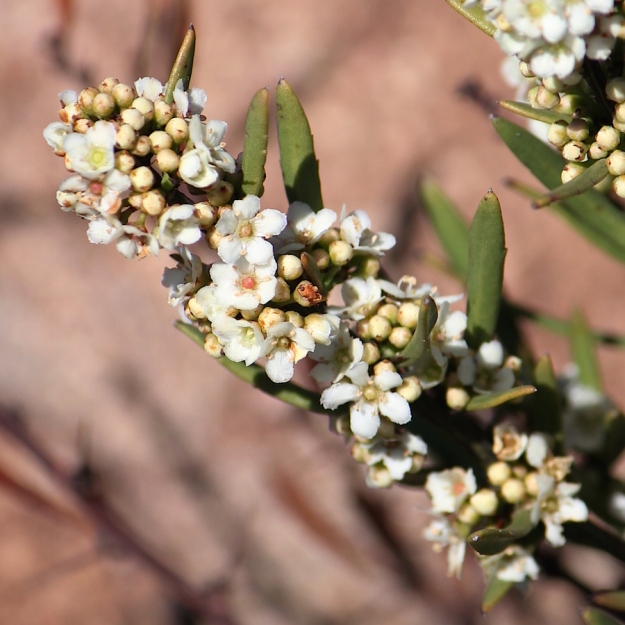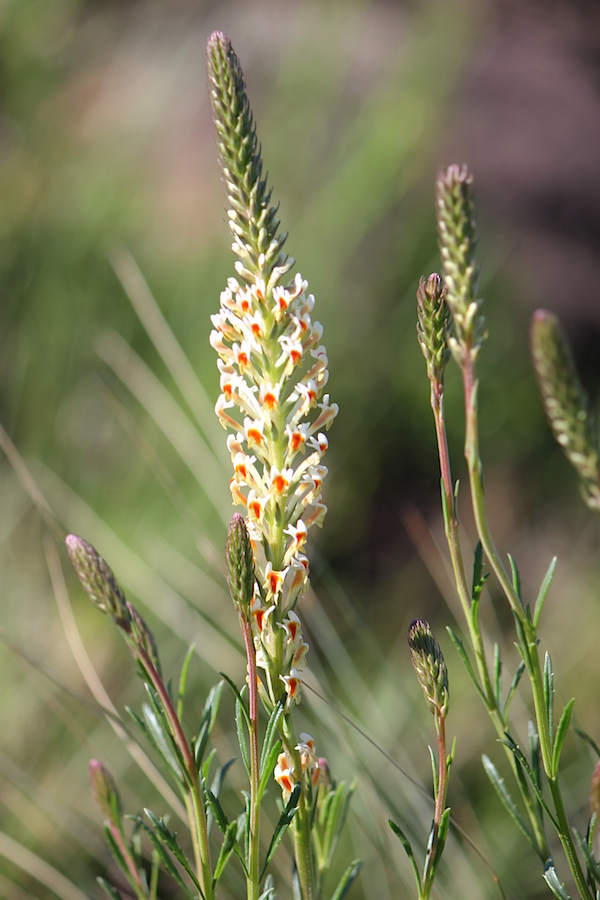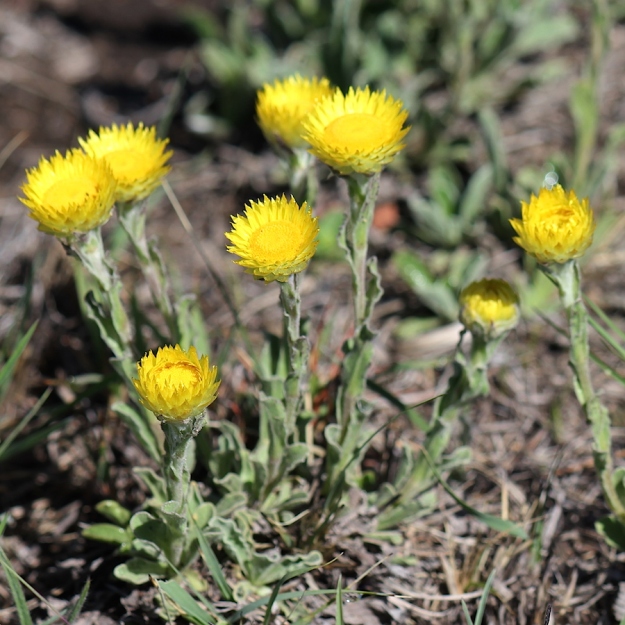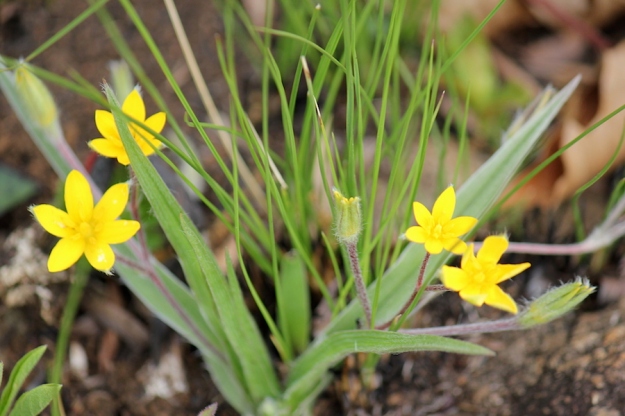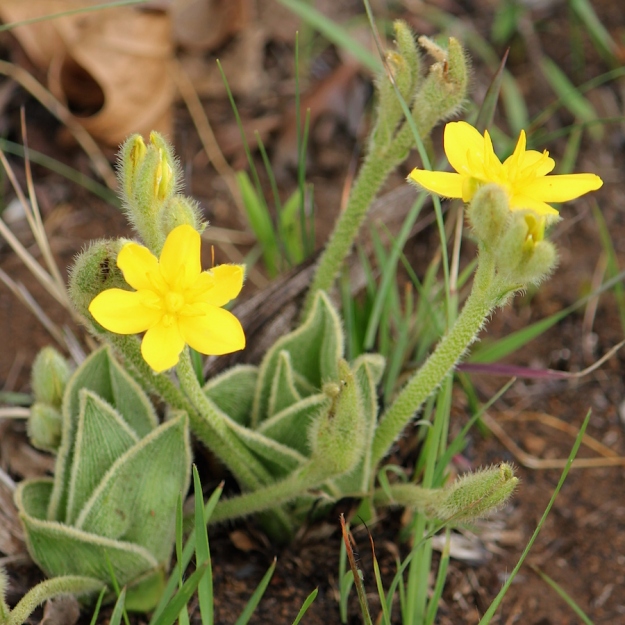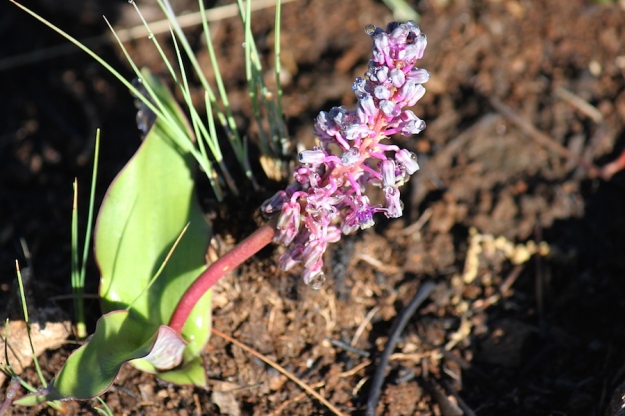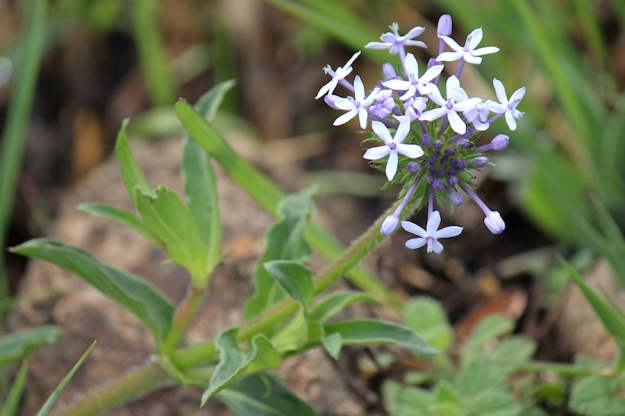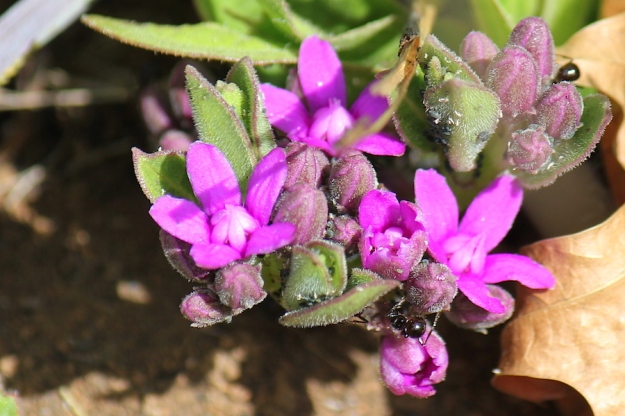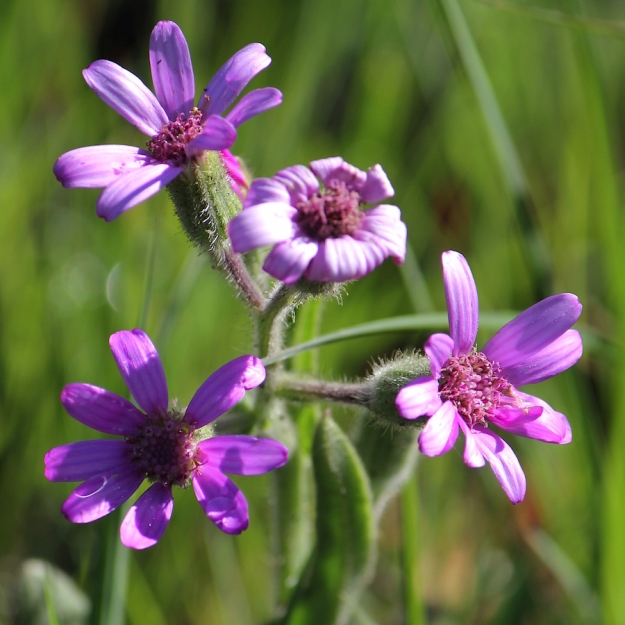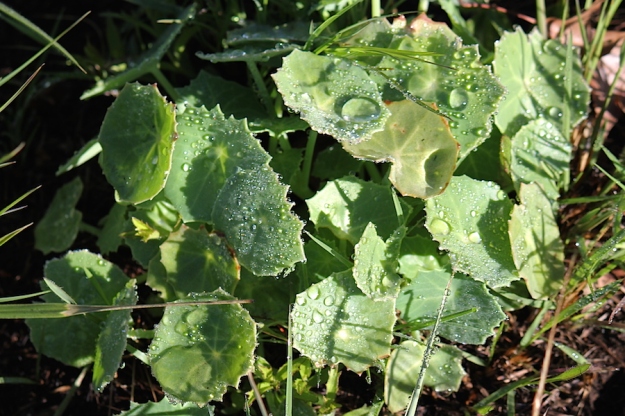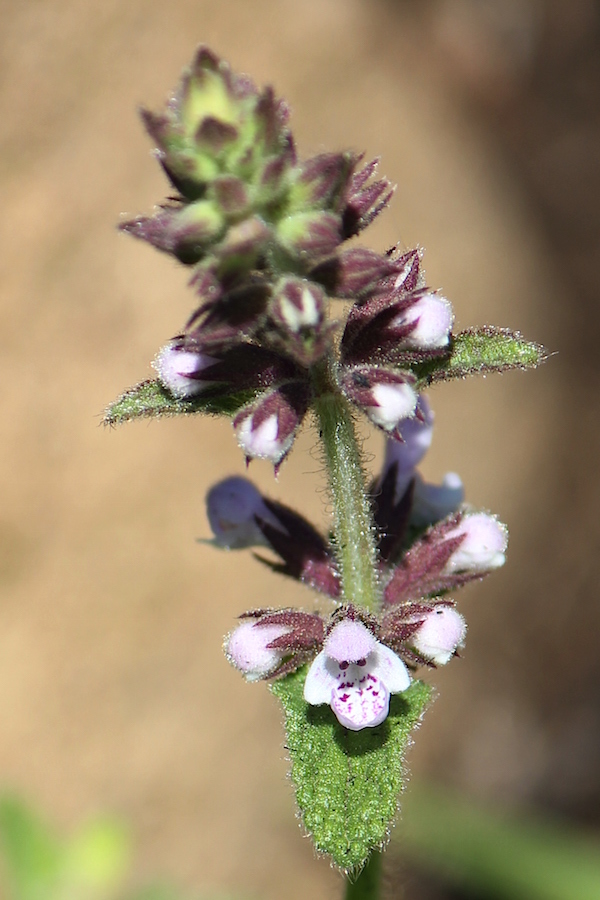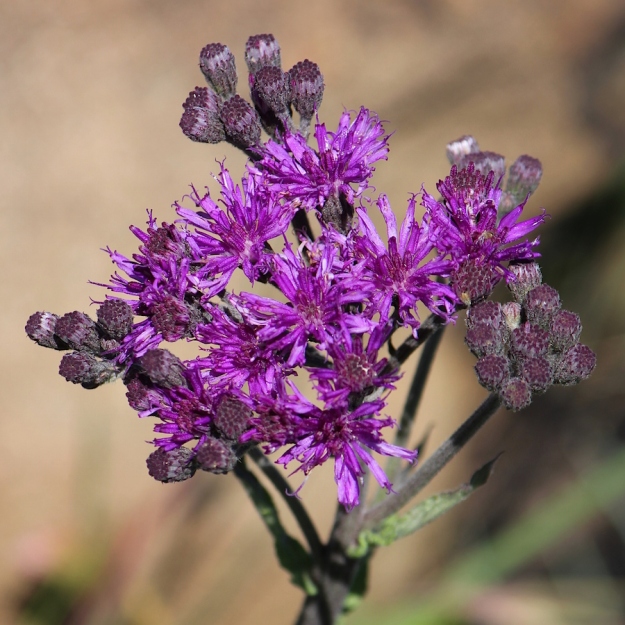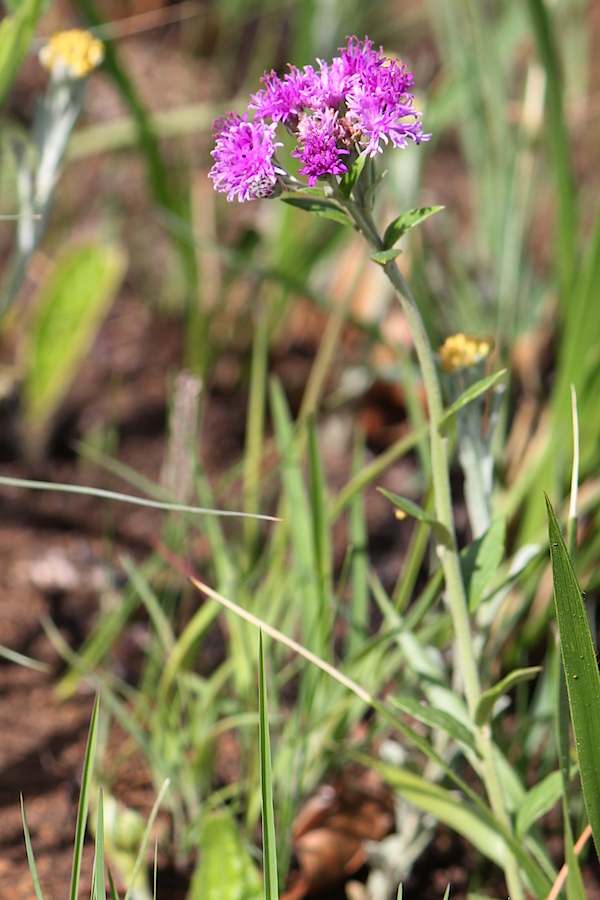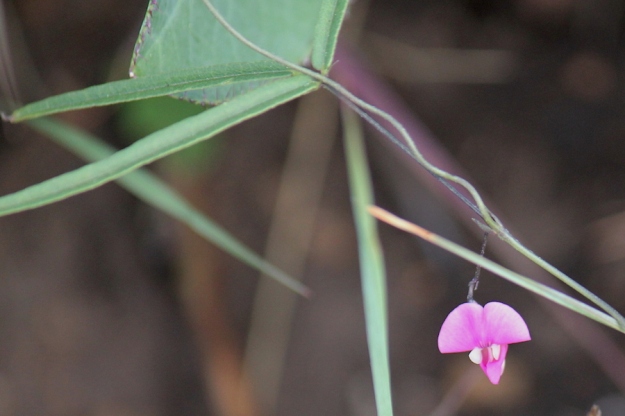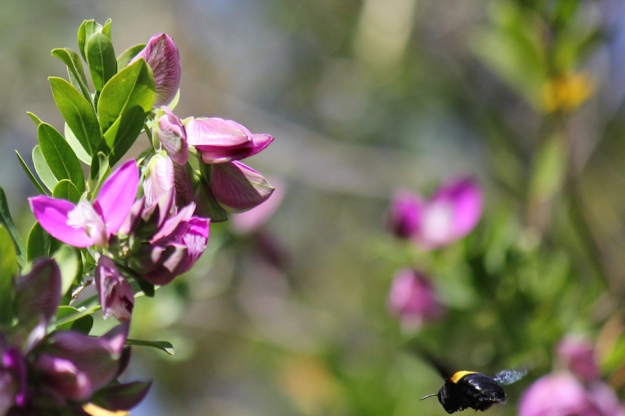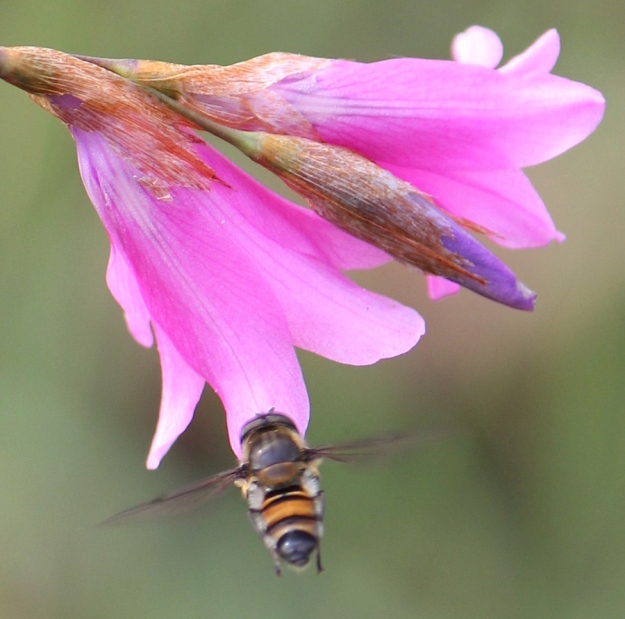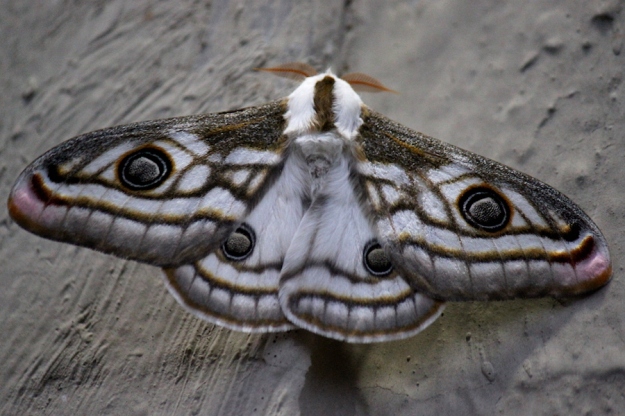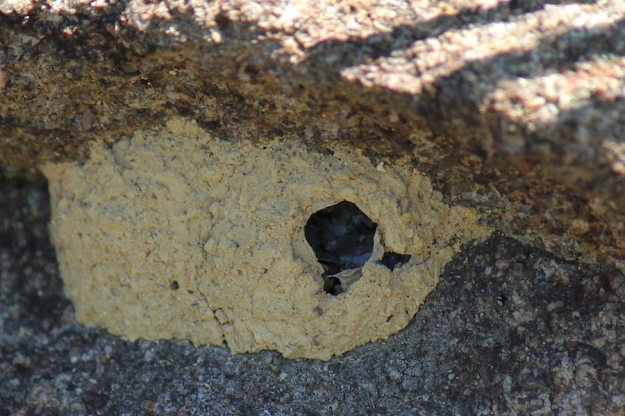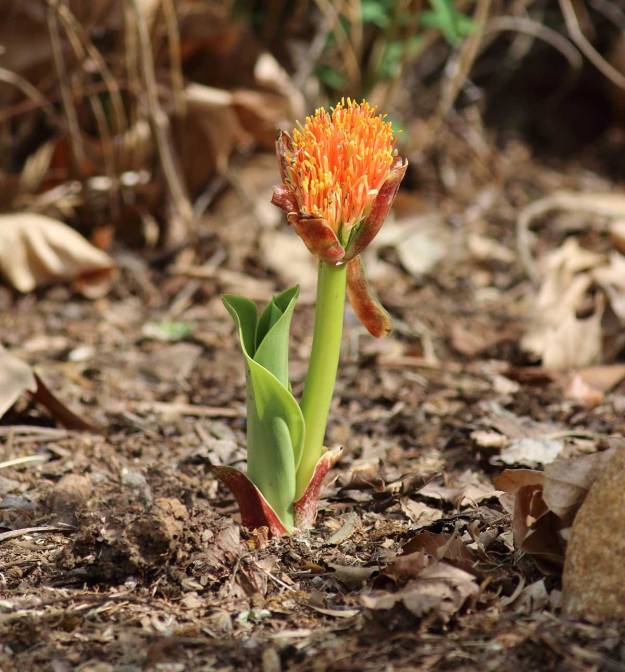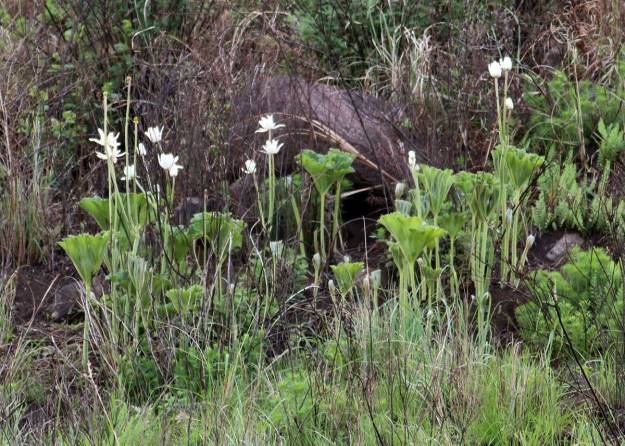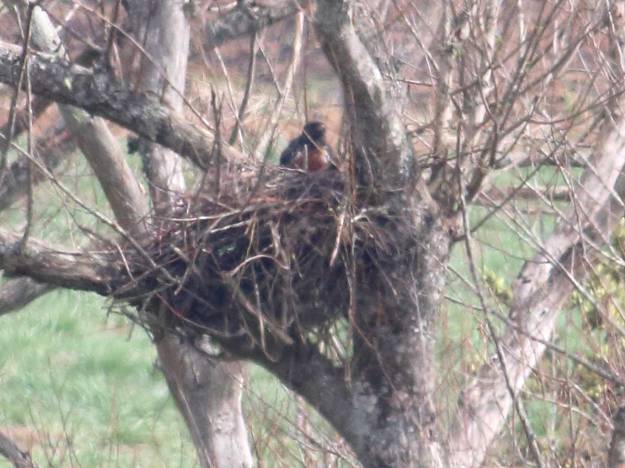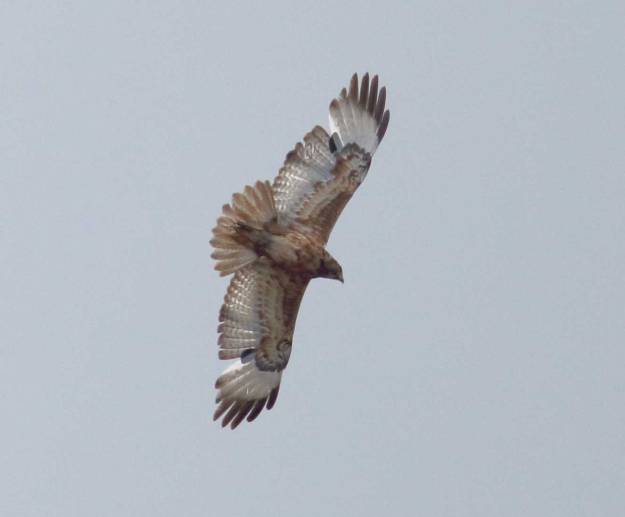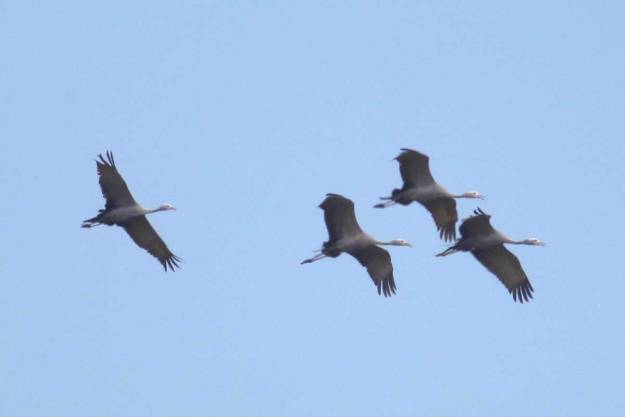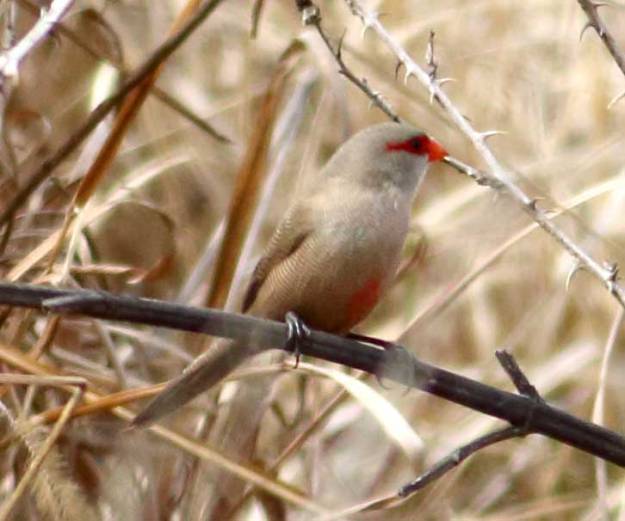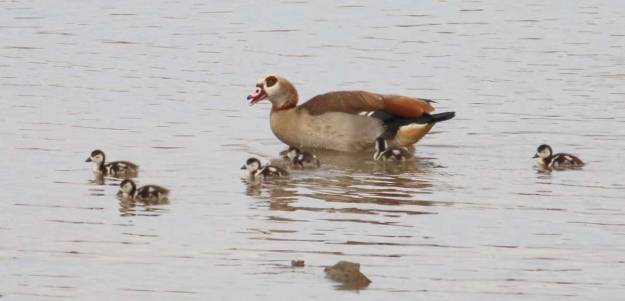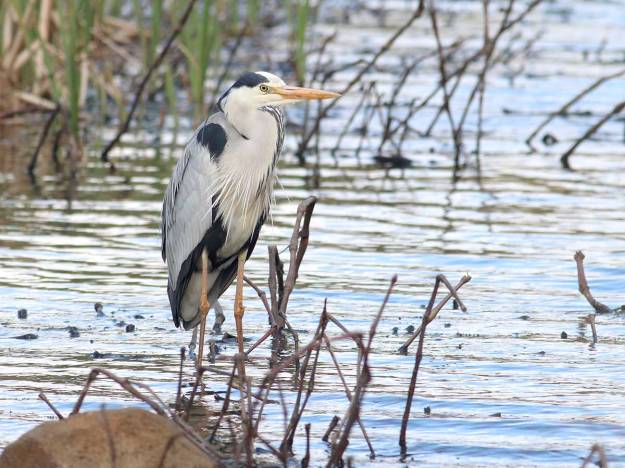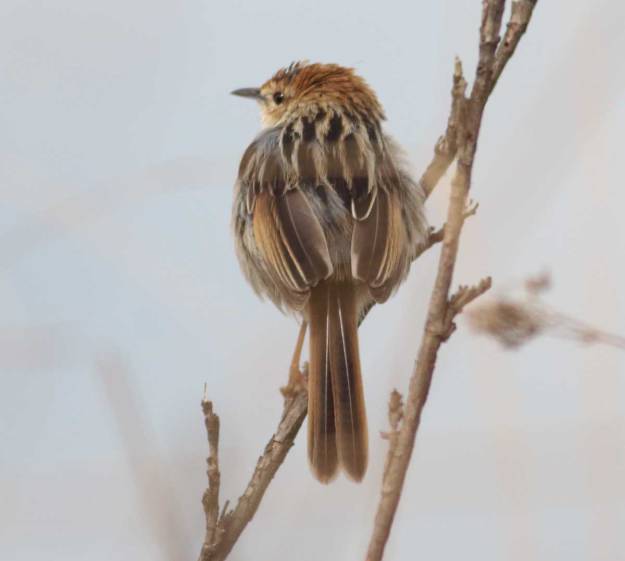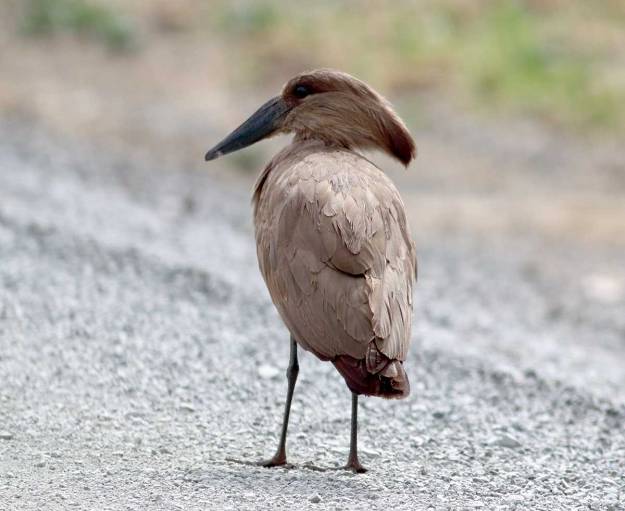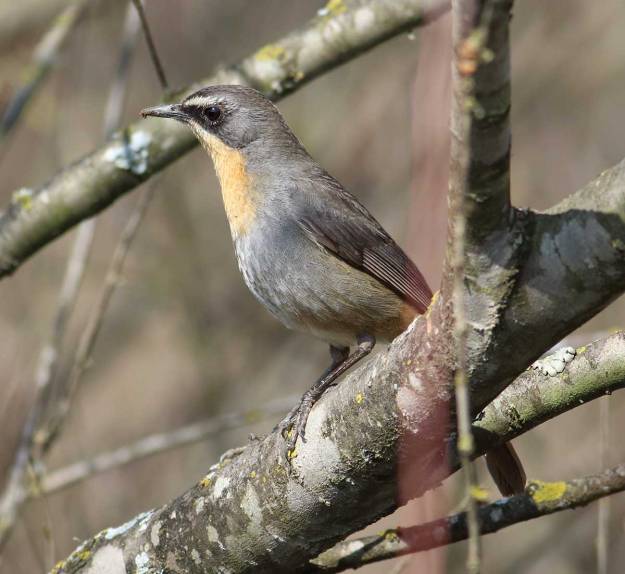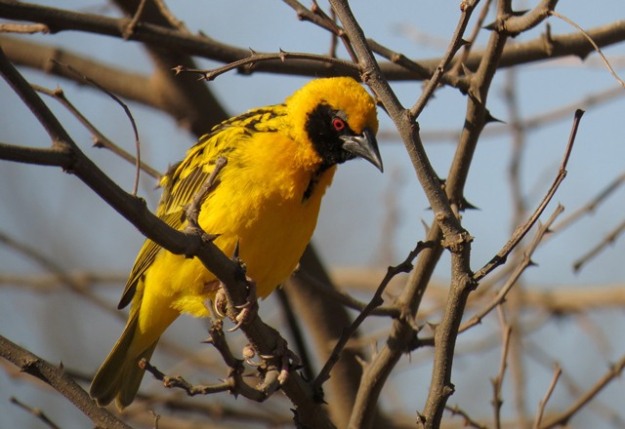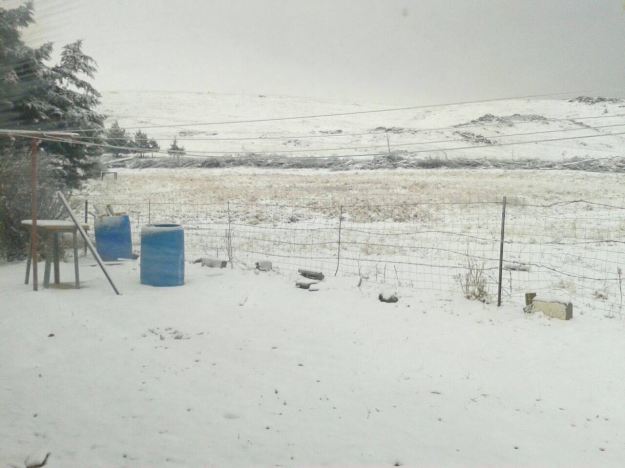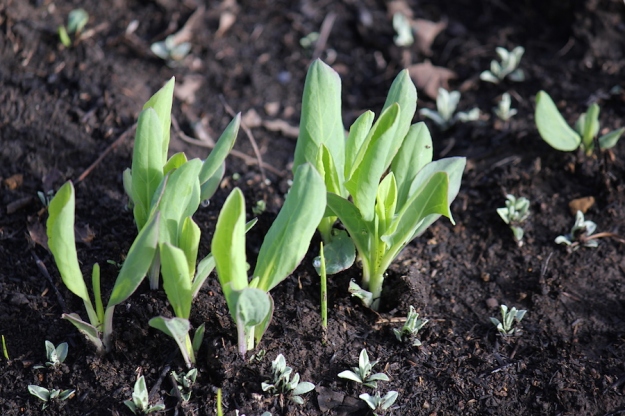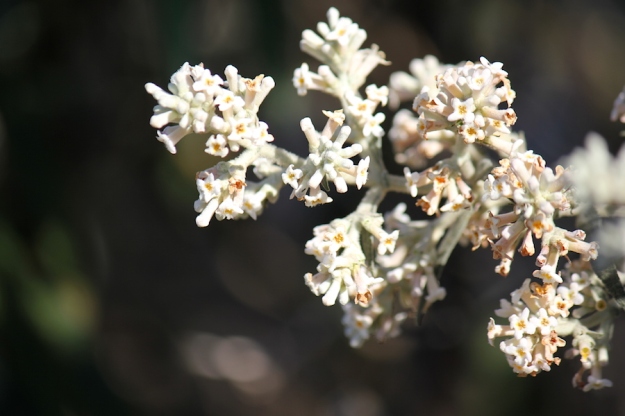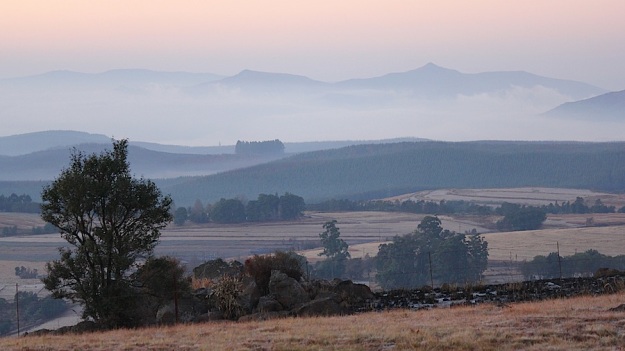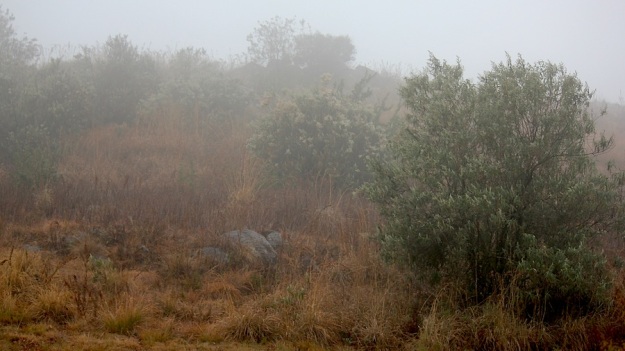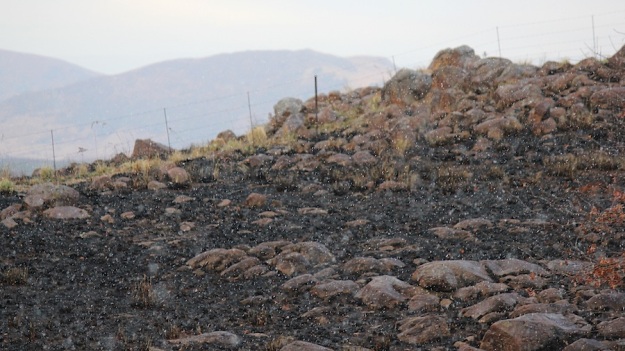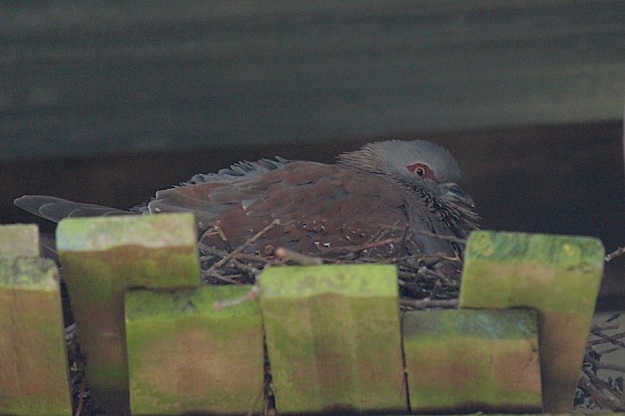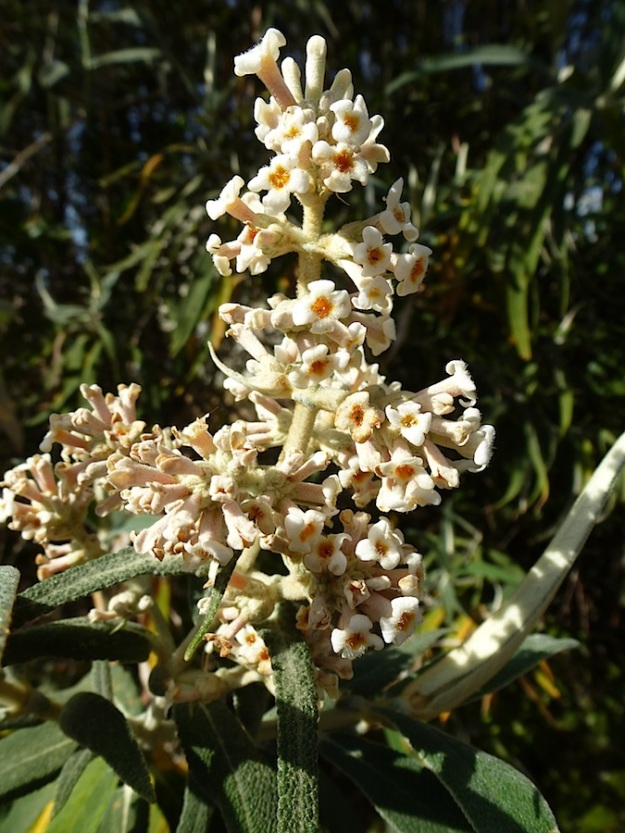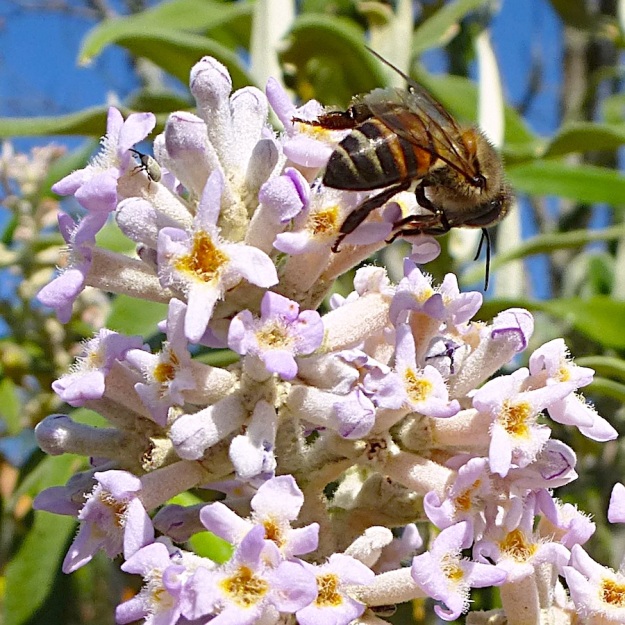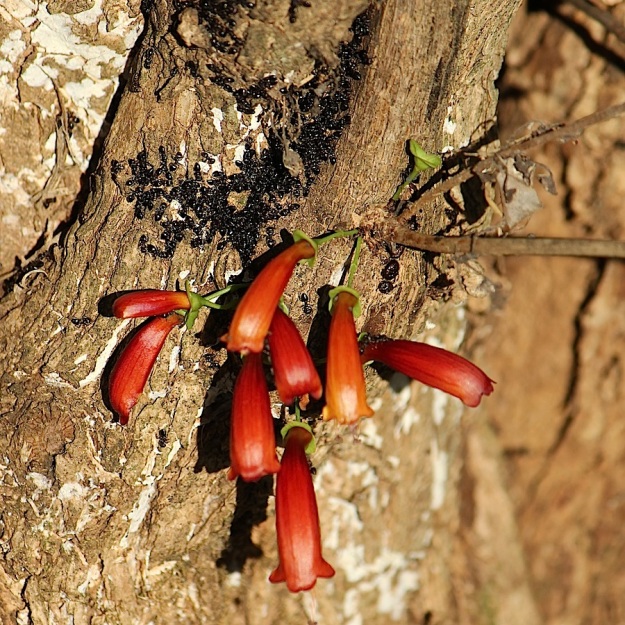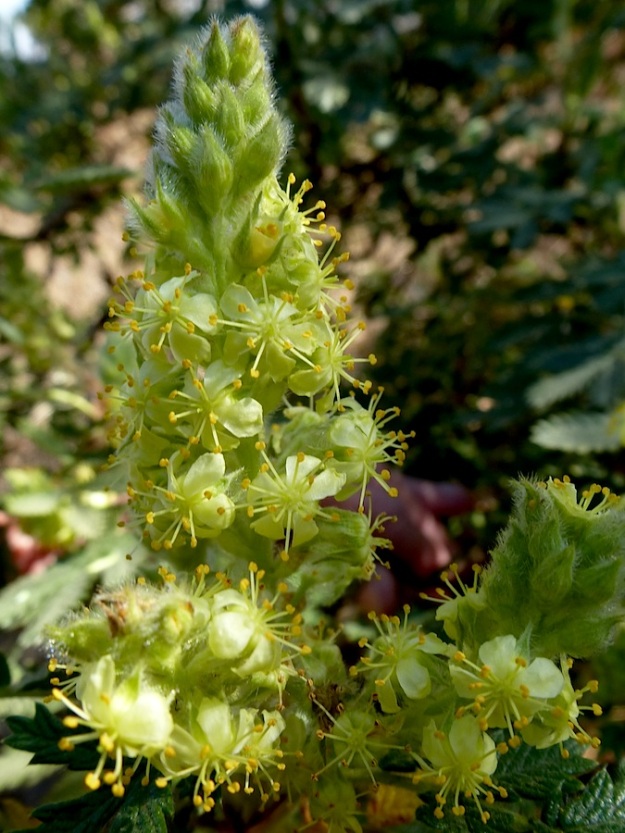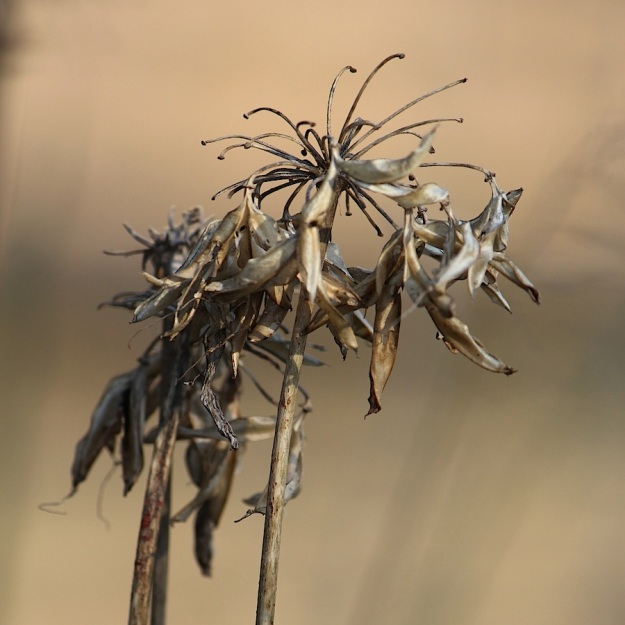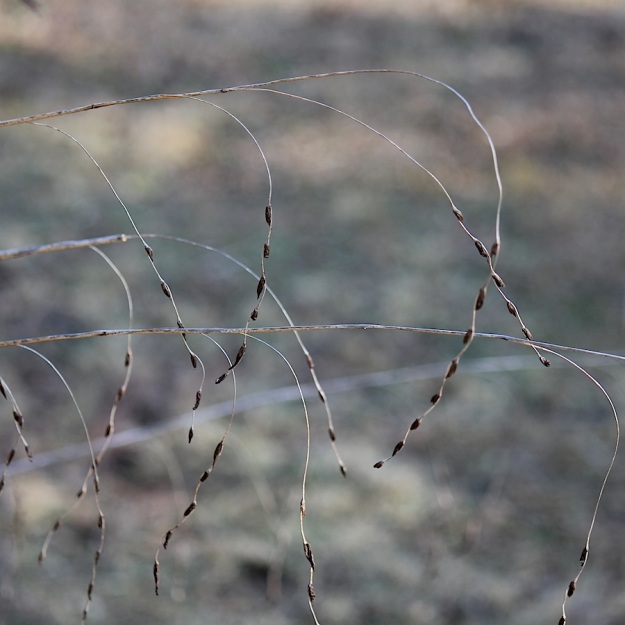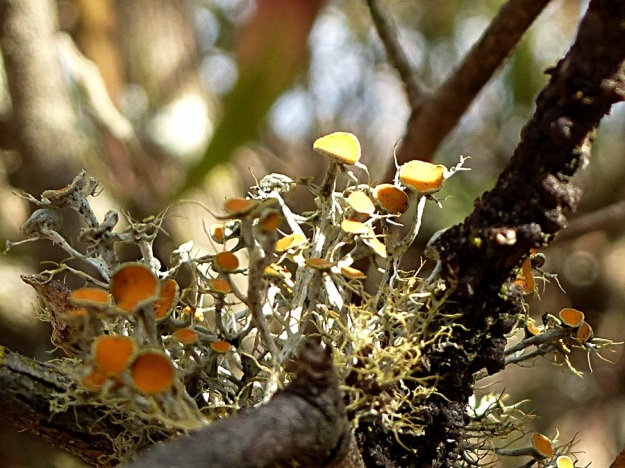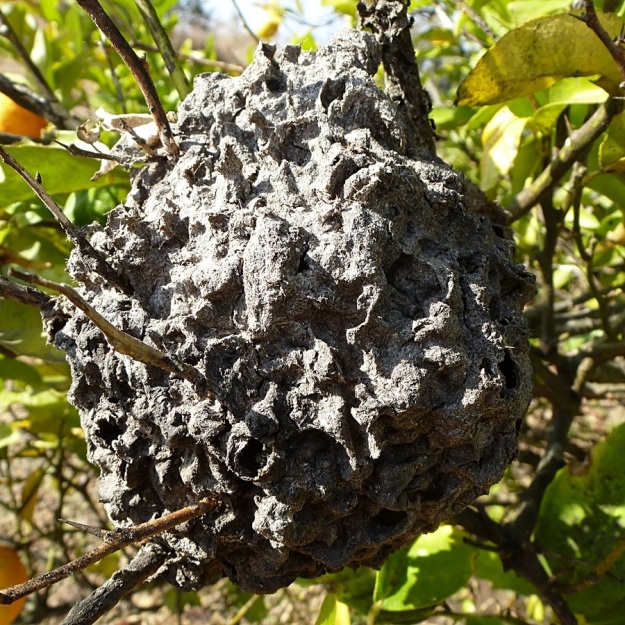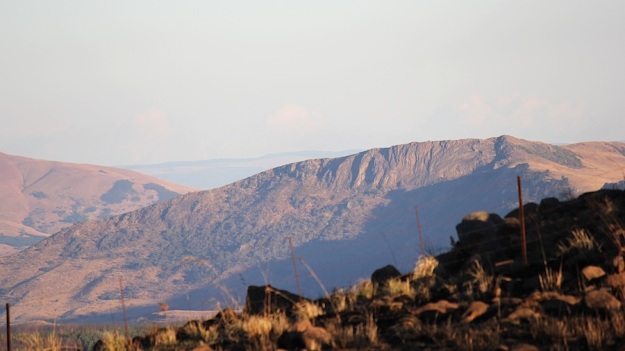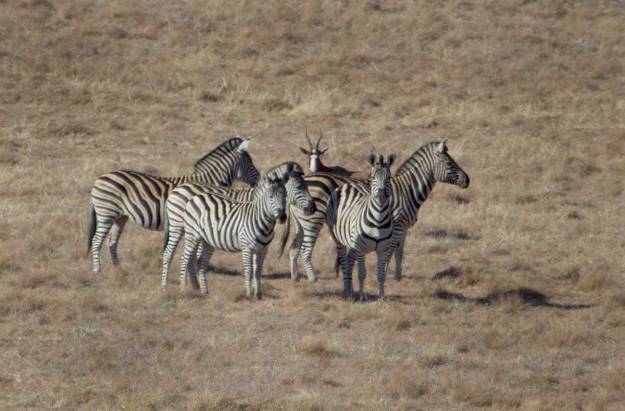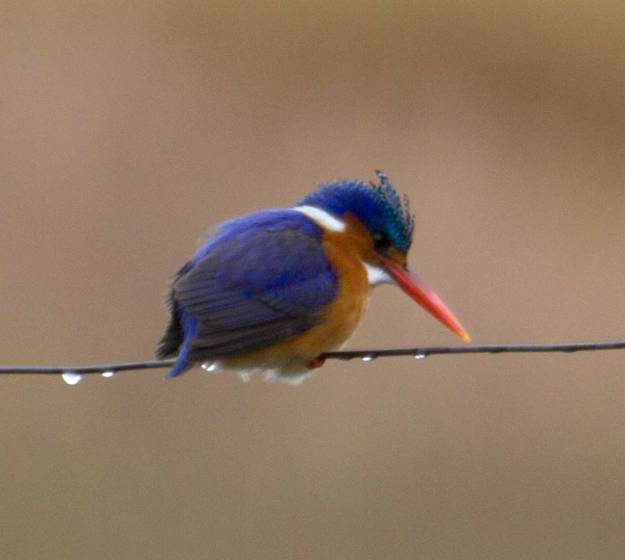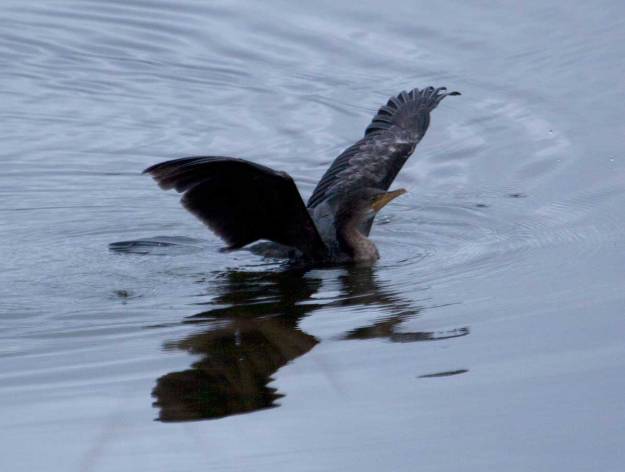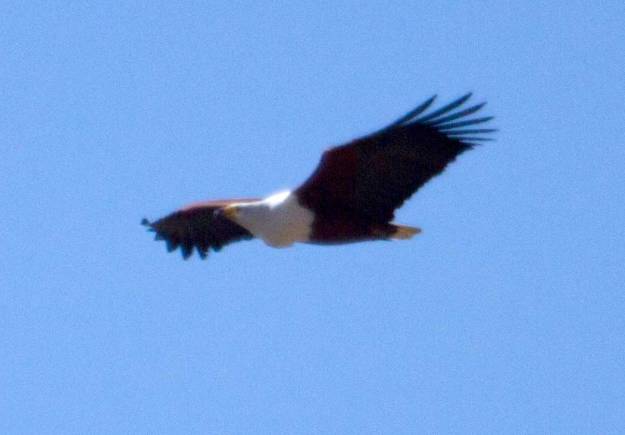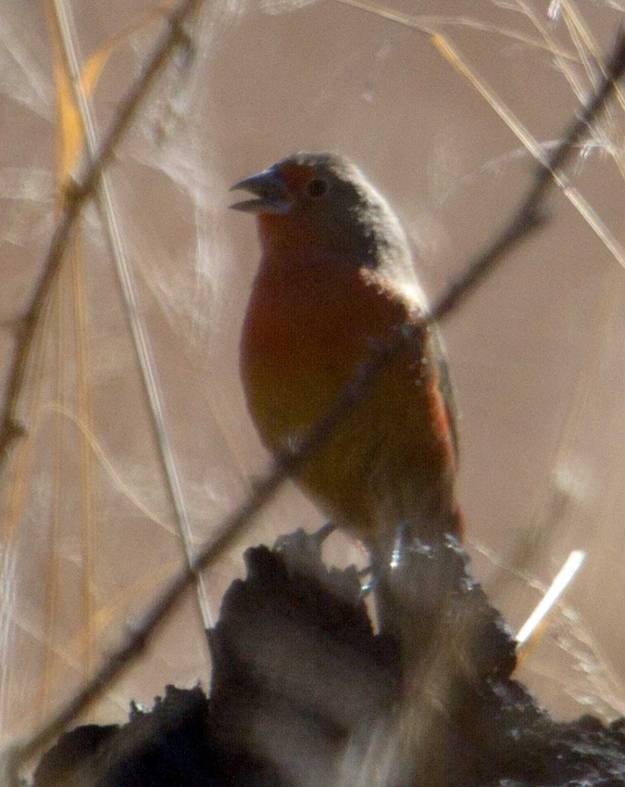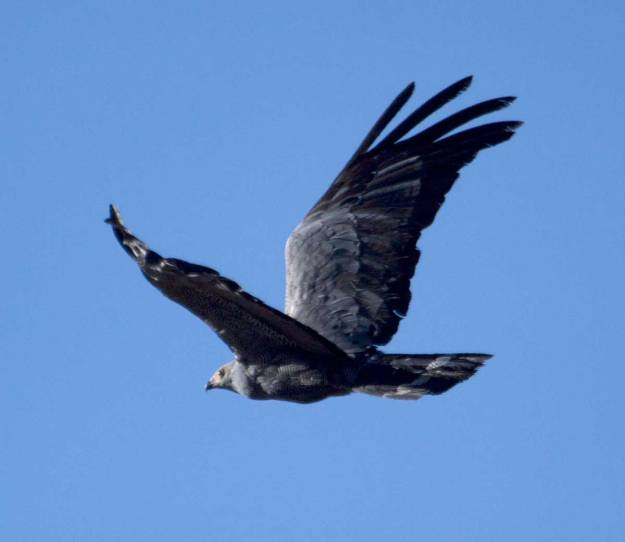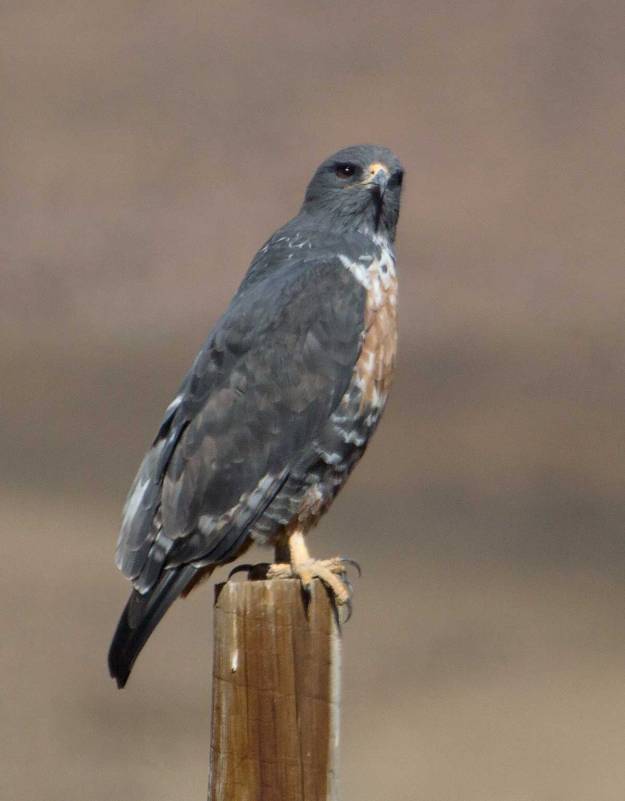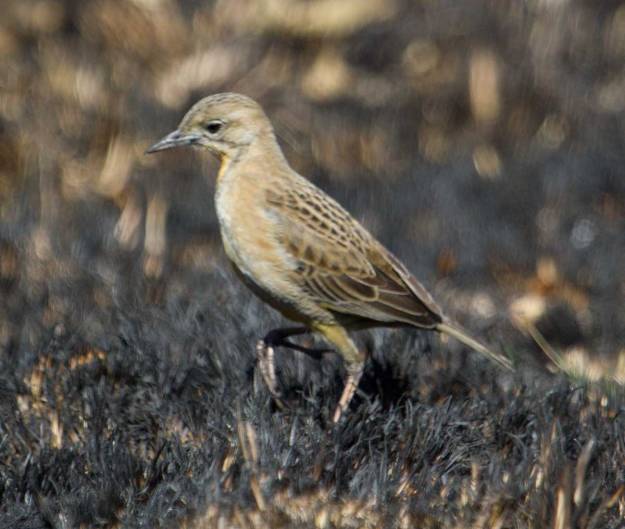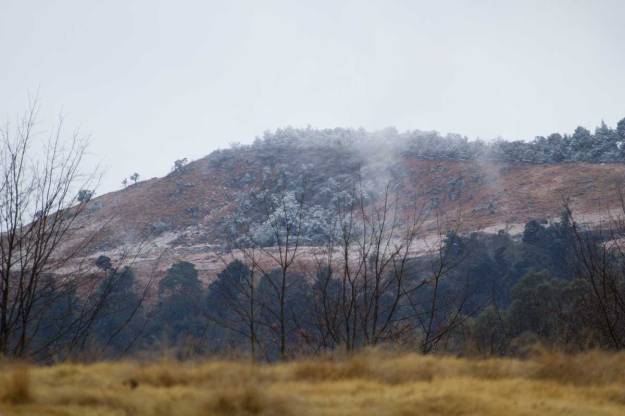Helen Booysen – Crab Apple Cottages
Windy day…My Mobile did its best… Wildflowers and an unknown bug pictured on our walk over the hills:
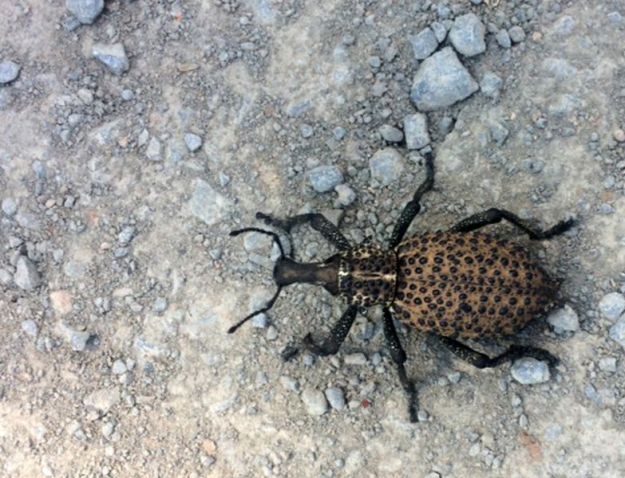
Leonotus in the hills




Granny’s Bonnet orchids

Carnivorous Snail on D707

Pat & Sandra Merrick – Albury Farm, Lidgetton
Welcome to the Snake farm. I have been expecting it – the hot days this month. On Monday my maid went out to sit outside next to the rockery – 12.30 – that’s when they emerge from the rockery – a metre long cobra. I told her not to sit there anymore. Then on Thursday Pat was doing a block burn in front of the house. The one labourer was putting out the fire with the fire hose when a puff adder shot between his legs and slithered down the hill at speed. Who said puffies move slowly. I’m afraid the other huge puff adder got burnt in the fire. I am now wondering how many more snakes are around the garden.
Our Black Sparrowhawk chick revealed his rufous feathers on the 27th august. A few days later I saw him sitting on a branch high up in one of the gum trees (6th sept). After that I saw him only on a few occasions when I whistled – then he would fly out from one of the trees and whistle back. I have not seen them since beginning of September but Pat sees them occasionally.

There have been lots of Reedbuck around. One day there were 4 adult females and 4 youngsters together,


and for the first time we have had 2 sets of oribi on the farm – 3 males and 3 females – the one male only has one horn. (I did fill in and send off the Oribi survey form) We see them almost daily.

At the beginning of September a buzzard arrived and sat on the dead tree for about an hour – it has been identified as a juvenile Jackal Buzzard. Thanks to the Birdlife KZN Midlands Club for their assistance in this identification.

The Burchell’s Coucal keeps evading my camera – flew past the house with large worm in its beak and went straight into the shrubbery once more where I think it may be nesting.
One very windy night there was a scratching on our bedroom door while I was reading. This glass door leads onto the verandah. I was a bit nervous about opening the curtain but was surprised to find that it was a Speckled Mousebird who had probably been blown out of the trees. Pat placed it in a box and released him next morning.
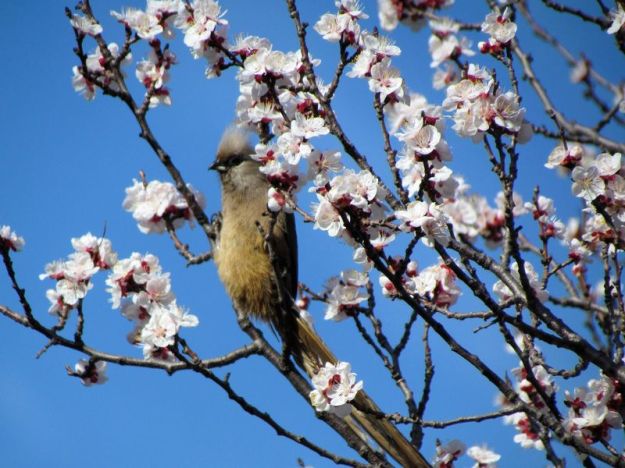
Our 2 Blue Cranes are back on the farm and wade in the puddle of a dam each evening. On the 14th sept 20 crowned crane flew over the farm flying west. A porcupine was trying to get into the garden by digging a huge hole at the farm gate – the dogs would stand and bark at it but he took no notice – he did get in the one night and dug up a lot of my dietes bulbs. Pat attached more wire to the bottom of the gate which seems to have worked. Still hear the howling of the jackal at night – my dogs love to howl along with them – gets very rowdy at times.
The swallows arrived ten days ago and once again are trying to make a nest on the glass light bowl at front verandah. I have left the light on which seems to have deterred them, but not sure where they have gone now. The sparrows are busy making nests under the eaves at all corners of the house and the wagtails are once more nesting in the jasmine creeper. The rock pigeons are nesting in the one chimney. We occasionally hear the Barn Owl when he clonks onto the roof of the study where we watch TV or sometimes on the bedroom roof late at night where he busily eats his prey. We are not sure if he/she is still in the study chimney. We think she may be living in the forest behind the house.
We are thankful for the rain this past month. Just pray we get a good season this year.
Male Amethyst sunbird

Female White-bellied Sunbird

Long-crested Eagle

Male Southern masked weaver building a nest

Red-billed Quelea (non-breeding males)

Scadoxus puniceus

Evert van Breemen – Old Furth
I have a vague memory of you asking for snow pictures some months back.
Herewith my belated reply.

Detail of picture:
The closest part of the Berg is some 70 kms away and I estimate we are seeing
about 100 km of snow along the range which varies from 2.5 to 3.3 km in height. The picture is taken from a mast which is at 1.6 km altitude
